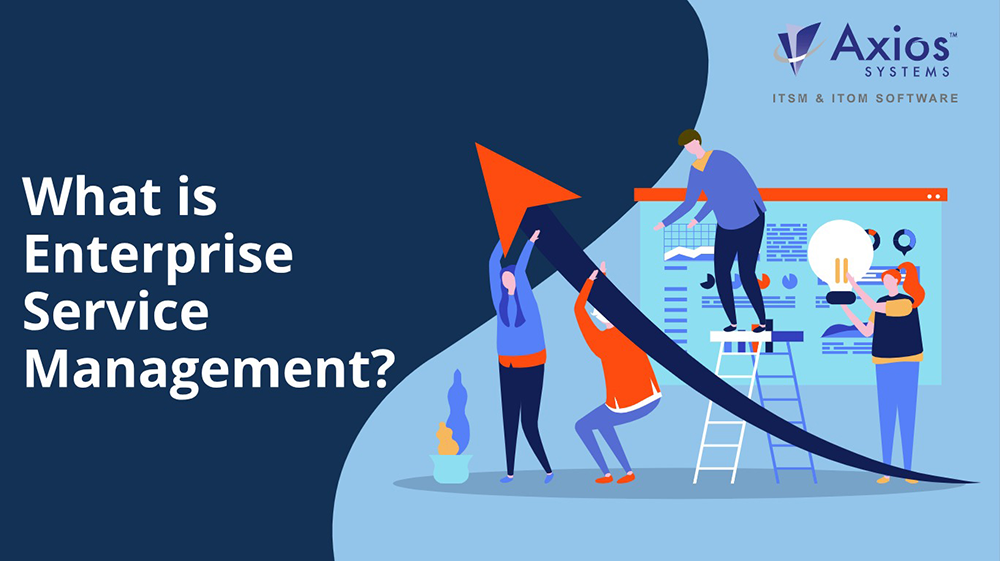With growing interest in and increasing adoption of Enterprise Service Management (ESM), Stephen Mann from ITSM.tools on behalf of Axios Systems, tells us how enterprises can maximise its potential.
A recent Enterprise Service Management (ESM) 101 webinar from Axios Systems has offered up a variety of insights into what ESM is, what’s driving its adoption, the benefits of successful adoption, common use case scenarios and adoption levels, and the role of ESM in delivering back-office Digital Transformation.
But what were the most important takeaways in terms of understanding and learning? To help, this article offers up eight of the key things to know about ESM.
- What is ESM?
While there are many definitions of ESM, one that concisely describes it is: “The use of ITSM principles and capabilities in other business areas to improve performance, service and outcomes.”

- ESM also goes by other names
There are many other names for ESM, including for example:
- Outside IT
- Taking the IT out of ITSM (IT Service Management)
- Beyond IT (or beyond ITSM)
- Service management
- Shared services
And, more recently, ‘back-office Digital Transformation’ can also be added to this list.
- ESM is not just about ITSM tool reuse
No matter which of the above names are used, an important point to understand here is that ESM is very much about improving business operations and outcomes, not merely the use of ITSM technology and best practices in other business functions.
- There are five key drivers for the growing interest in, and adoption of, ESM:
- Consumerisation – put simply, employees are now so conditioned to expect convenience, speedy service, and the ability to find whatever they need, whenever they need it, in their personal lives that they now expect this at work.
- Business function/corporate-level demand (including back-office Digital Transformation) – the earliest adoption of ITSM tools in other business functions was very much a ‘push’ from IT to the needy business function. Now, however, and thanks to very-visible IT support successes – such as self-service portals – there’s now also a ‘pull’ from other business functions for ‘what IT has.’
- Better ITSM solutions – not only do modern ITSM tools have richer capabilities, they’re now also far more flexible, recognising the need for customers to ‘do things their way’ and the need for multi-departmental use in particular.
- The shift in tool selling/selection focus – half a decade ago, ITSM tools were sold on ITIL best practice alignment with customers getting granular insight into functional capabilities. More recently, however, ITSM tool vendors have helped to evolve the tool selection process by taking a different approach that focuses on value rather than functions and features.
- Customer success stories – demonstrable successes by tool-vendor customers have been key in encouraging prospect organisations to follow suit in improving their non-IT business-function operations and outcomes.
- ITSM tool use outside IT is high
A 2018 HDI survey and report The State of ESM found that:
- 84% of organisations currently have a formal ITSM tool
- 91% of respondents with a formal ITSM tool state that their ITSM tool can be used outside of IT
- 5% of respondents currently use, or plan to use, their ITSM tool outside of IT
- There are different approaches to ESM
As with ITIL where different organisations adopt different ITSM best practice processes (or ‘management practices’ as per the new ITIL 4 update), there’s also a range of ESM scenarios.
Viewed simply, there’s the singular use of the corporate ITSM tool in another business function – for instance, its use to support human resources (HR) operations. Let’s call this ‘tactical’ ESM. But please note that there’s currently no differentiation in the naming of these different scenarios within the ITSM industry, with this simply a logical term to differentiate this reactive and piecemeal approach (to sharing the ITSM tool and maybe some ITSM best practice) from a more strategic approach.
Such that ‘strategic’ ESM is where a business-level decision is made to systematically share ITSM best practice and technology across the organisation. With this, the ITSM capabilities are shared with more business functions than is common with the tactical approach.
- ESM can help beyond the common business function use cases
Educational institutions are a great example of this, where not only do these organisations have all the opportunities across HR and facilities, there are also opportunities to enable and better manage services and support in other areas including:
- The admissions office
- The alumni office
- Faculty services
- Libraries
- Medical centres
- Research departments
And, if you think about the need to serve and support students as end-users or customers, there will most likely be an even greater expectation for consumer-like experience, technology-enabled, support and customer service that can be facilitated by ESM.
- The benefits of ESM are very similar to those of ITSM
It’s logical – because if ITSM capabilities are being shared with, or extended to, other business functions, then so are the available benefits. These include:
| • Better service and customer experience | • Increased control and governance |
| • Improved efficiency and reduced costs | • A platform for improvement opportunities |
| • Self-service efficiencies and workload reductions | • Improved access and communication channels |
| • A better ROI on the corporate ITSM tool investment | • Improved accountability |
| • Improved effectiveness of operations | • A better understanding of what services are needed |
| • Improved visibility into operations and performance | • Standardisation |
Or, to use terminology that’s more likely to be well-received by other business functions – to provide the capabilities that support back-office Digital Transformation, which is very much aimed at improving employee productivity and the employee experience.
Plus, there’s another important benefit of ESM that shouldn’t be overlooked. This is the opportunity for IT to better demonstrate its business value via its service management skills, knowledge, and experience plus the provision of ITSM technology to support business-wide service management.
If you want to find out more about the opportunities ESM can bring your organisation, download the on-demand webinar recording of Axios Systems. Watch now!
You can also find out more about this subject by reading this ESM 101 blog.
Axios Systems will be hosting a further webinar on June 11.
Click below to share this article


